Filtering dirt from rocks is essential for various landscaping and construction projects, ensuring you have clean fill dirt for your needs. Rockscapes.net offers expert guidance and innovative solutions for effectively separating soil from rocks, enhancing your landscaping projects with quality materials. Let’s explore the best methods for rock removal, soil sifting, and creating the perfect rockscapes.
1. Why Is Filtering Dirt From Rocks Important?
Filtering dirt from rocks is important because it provides usable soil for landscaping, prevents damage to underground systems, and promotes self-sufficiency.
1.1. Providing Usable Soil
Clean, rock-free soil is essential for various landscaping projects. Removing rocks ensures that plants can grow without obstruction, promoting healthier root systems and overall growth. According to the USDA Natural Resources Conservation Service, soil texture and composition significantly impact plant health, making the removal of rocks a crucial step in preparing soil for planting.
1.2. Preventing Damage
Rocks in the soil can cause damage to underground systems such as septic tanks and water lines. Sharp rocks can puncture or otherwise compromise these systems, leading to costly repairs. As noted by the Arizona Department of Environmental Quality, proper backfilling with rock-free soil is vital to protect underground infrastructure.
1.3. Promoting Self-Sufficiency
Filtering dirt from rocks allows homeowners and landscapers to reuse existing soil, reducing the need to purchase additional fill. This promotes self-sufficiency and can save money on landscaping projects. Rockscapes.net champions sustainable landscaping practices, encouraging the efficient use of resources and reducing waste.
 Huge rock sifter
Huge rock sifter
2. What Are the Basic Methods for Filtering Dirt From Rocks?
The basic methods for filtering dirt from rocks include manual sifting, using a rock grizzly, and employing mechanical sifters.
2.1. Manual Sifting
Manual sifting involves using a screen or sieve to separate rocks from soil. This method is suitable for small-scale projects and allows for precise control over the separation process.
2.1.1. Tools and Materials
- Sifting Screen: A mesh screen with openings small enough to allow dirt to pass through but large enough to catch rocks.
- Shovel or Trowel: For scooping and distributing soil onto the screen.
- Wheelbarrow or Container: To collect the sifted soil and rocks.
2.1.2. Procedure
- Place the sifting screen over a wheelbarrow or container.
- Use a shovel to scoop soil and rocks onto the screen.
- Shake the screen to allow the dirt to fall through, leaving the rocks behind.
- Remove the rocks and collect the sifted soil.
2.2. Rock Grizzly
A rock grizzly is a larger, more robust sifting device designed for handling larger volumes of soil and rocks. Typically used in mining, it can be adapted for landscaping purposes.
2.2.1. Design and Construction
- Frame: Constructed from wood or steel, providing structural support.
- Sifting Surface: Made of metal bars or mesh, spaced to allow dirt to pass through while retaining rocks.
- Support Structure: Posts or legs to elevate the grizzly for easy collection of sifted materials.
2.2.2. Usage
- Prop up the rock grizzly at an angle.
- Load soil and rocks onto the sifting surface using a shovel or excavator.
- Allow gravity to separate the dirt from the rocks as the material slides down the grizzly.
- Collect the sifted soil and rocks in separate piles.
2.3. Mechanical Sifters
Mechanical sifters use motorized components to automate the sifting process, making them suitable for large-scale projects.
2.3.1. Types of Mechanical Sifters
- Rotary Sifters: Use a rotating drum with a mesh screen to separate materials.
- Vibratory Sifters: Employ a vibrating screen to agitate and separate soil and rocks.
2.3.2. Operation
- Load soil and rocks into the sifter.
- Activate the motor to start the sifting process.
- Collect the separated soil and rocks from the designated outputs.
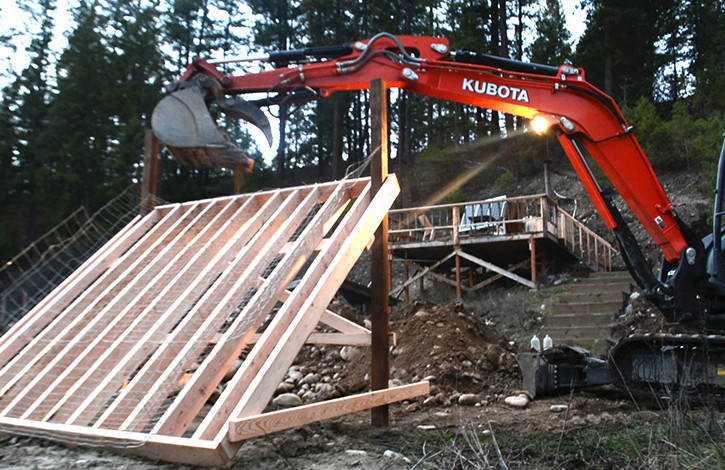 Rock removal equipment
Rock removal equipment
3. What Are the Key Steps to Building Your Own Rock Grizzly?
Building your own rock grizzly involves creating a simple structure with a frame, sifting surface, and support. Rockscapes.net encourages DIY landscaping projects that save money and utilize available resources.
3.1. Materials Needed
- Wood or Steel: For constructing the frame and support structure.
- Metal Bars or Mesh: To create the sifting surface.
- Fasteners: Such as screws, bolts, and nails.
- Tools: Including a saw, drill, measuring tape, and hammer.
3.2. Construction Steps
- Build the Frame: Construct a rectangular frame using wood or steel, ensuring it is sturdy and can withstand the weight of the soil and rocks.
- Attach the Sifting Surface: Secure the metal bars or mesh to the frame, spacing them appropriately to allow dirt to pass through while retaining rocks.
- Add Support: Attach posts or legs to elevate the grizzly, providing space for collecting sifted materials.
- Reinforce the Structure: Add braces to strengthen the frame and prevent it from collapsing under heavy loads.
3.3. Tips for Improvement
- Use Sturdy Materials: Opt for high-quality wood or steel to ensure the grizzly lasts longer.
- Proper Spacing: Adjust the spacing of the sifting surface to suit the size of the rocks you need to filter.
- Consider Mobility: Add wheels to make the grizzly easier to move around your property.
4. What Types of Materials Are Best for Building a Rock Filter?
The best materials for building a rock filter are durable, weather-resistant, and effective at separating soil from rocks.
4.1. Wood
Wood is a cost-effective and readily available material for building a rock filter. However, it is prone to wear and tear, especially when exposed to moisture and heavy loads.
4.1.1. Types of Wood
- Pressure-Treated Lumber: Resistant to rot and insect damage, making it suitable for outdoor use.
- Hardwoods: Such as oak and maple, offer greater strength and durability compared to softwoods.
4.1.2. Advantages
- Cost-effective
- Easy to work with
- Readily available
4.1.3. Disadvantages
- Prone to rot and insect damage
- Less durable than steel
- Requires regular maintenance
4.2. Steel
Steel is a robust and long-lasting material ideal for building rock filters that can withstand heavy use.
4.2.1. Types of Steel
- Carbon Steel: Strong and durable, but susceptible to rust.
- Stainless Steel: Corrosion-resistant, making it ideal for wet environments.
4.2.2. Advantages
- High strength and durability
- Long-lasting
- Can withstand heavy loads
4.2.3. Disadvantages
- More expensive than wood
- Requires welding and fabrication skills
- Can be heavy and difficult to move
4.3. Mesh and Screening
The type of mesh or screening used can significantly impact the efficiency of the rock filter.
4.3.1. Types of Mesh
- Hardware Cloth: A woven wire mesh with small openings, suitable for filtering fine particles.
- Chain Link Fence: Offers larger openings and greater strength, ideal for handling larger rocks.
- Expanded Metal: A sheet of metal that has been slit and stretched to create a mesh-like pattern, providing a balance of strength and sifting capability.
4.3.2. Considerations
- Opening Size: Choose a mesh size that allows dirt to pass through while retaining rocks.
- Material Strength: Ensure the mesh can withstand the weight and abrasion of the soil and rocks.
- Corrosion Resistance: Opt for galvanized or stainless steel mesh to prevent rust and corrosion.
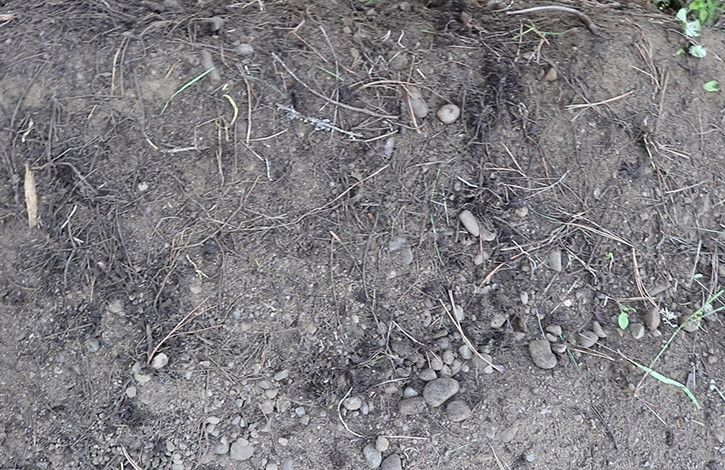 Soil sifting rocks from soil
Soil sifting rocks from soil
5. How Do You Improve the Efficiency of Your Rock Filter?
Improving the efficiency of your rock filter involves optimizing its design, materials, and usage techniques.
5.1. Design Improvements
- Adjust the Angle: Experiment with different angles to find the optimal slope for separating soil and rocks.
- Increase the Surface Area: A larger sifting surface allows for processing more material at once.
- Add Multiple Layers: Use multiple layers of mesh with progressively smaller openings to filter different sizes of rocks.
5.2. Material Upgrades
- Use Stronger Mesh: Replace chicken wire with chain link fence or expanded metal for greater durability.
- Reinforce the Frame: Add braces and supports to prevent the frame from bending or breaking.
- Consider a Metal Frame: Opt for a steel frame to withstand heavy loads and harsh conditions.
5.3. Usage Techniques
- Pre-Screening: Remove large rocks and debris before loading material onto the filter.
- Even Distribution: Distribute soil and rocks evenly across the sifting surface.
- Regular Cleaning: Clear accumulated rocks and debris from the filter to maintain its efficiency.
6. What Are Some Simple Alternatives for Sifting Small Amounts of Soil?
For sifting small amounts of soil, simple alternatives like milk crates or DIY screens can be effective and convenient.
6.1. Milk Crates
Milk crates are sturdy and have built-in openings that can be used for sifting soil.
6.1.1. How to Use
- Place the milk crate over a container or wheelbarrow.
- Load soil and rocks into the crate.
- Shake the crate to allow the dirt to fall through, leaving the rocks behind.
6.1.2. Advantages
- Readily available
- Cost-effective
- Easy to use
6.2. DIY Screens
Creating your own screen using a frame and mesh is another simple alternative.
6.2.1. Materials Needed
- Wood or PVC Frame: To provide structural support.
- Hardware Cloth or Mesh: For the sifting surface.
- Fasteners: Such as staples or screws.
6.2.2. Construction
- Build a frame using wood or PVC pipes.
- Attach the hardware cloth or mesh to the frame using staples or screws.
- Use the screen to sift small amounts of soil.
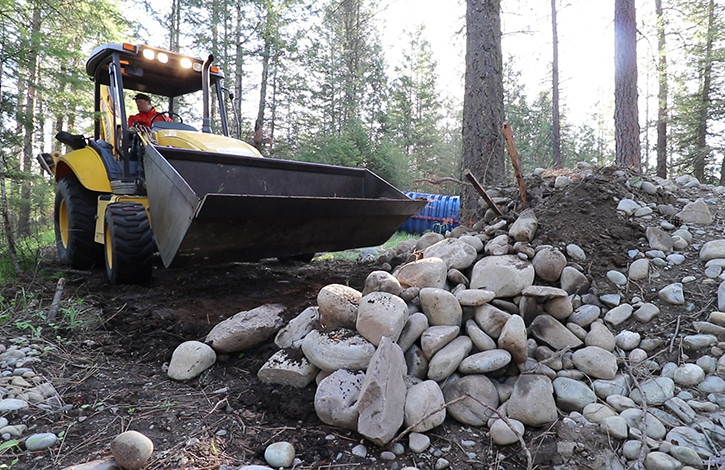 The soil ready to be filtered. This already had the large rocks removed with equipment.
The soil ready to be filtered. This already had the large rocks removed with equipment.
7. How Does Filtering Dirt From Rocks Contribute to Sustainable Landscaping?
Filtering dirt from rocks contributes to sustainable landscaping by reducing waste, conserving resources, and promoting soil health.
7.1. Reducing Waste
Reusing existing soil reduces the need to purchase new fill, minimizing waste and environmental impact.
7.2. Conserving Resources
Filtering dirt from rocks conserves resources by utilizing materials already available on site, reducing the demand for transportation and manufacturing of new materials.
7.3. Promoting Soil Health
Removing rocks from the soil improves its texture and composition, promoting healthier plant growth and reducing the need for fertilizers and pesticides. According to research from Arizona State University’s School of Sustainability, healthy soil ecosystems are essential for sustainable landscaping and environmental conservation.
8. What Are the Benefits of Using Filtered Soil in Landscaping Projects?
Using filtered soil in landscaping projects offers several benefits, including improved plant growth, enhanced aesthetics, and reduced maintenance.
8.1. Improved Plant Growth
Rock-free soil allows plant roots to grow freely, accessing nutrients and water more efficiently.
8.2. Enhanced Aesthetics
Clean, uniform soil provides a more attractive base for landscaping features, enhancing the overall appearance of your outdoor space.
8.3. Reduced Maintenance
Filtered soil reduces the risk of rocks damaging lawnmowers and other equipment, lowering maintenance costs.
9. What Are the Environmental Considerations for Filtering and Disposing of Rocks?
Environmental considerations for filtering and disposing of rocks include minimizing soil erosion, preventing water contamination, and finding beneficial uses for the rocks.
9.1. Minimizing Soil Erosion
Filtering soil can disturb the ground, leading to erosion. Implement erosion control measures such as using silt fences, mulching, and planting cover crops.
9.2. Preventing Water Contamination
Avoid filtering soil near waterways to prevent sediment and pollutants from entering the water. Use sediment traps and erosion control blankets to contain runoff.
9.3. Beneficial Uses for Rocks
Instead of disposing of rocks, find beneficial uses for them in your landscape, such as building retaining walls, creating rock gardens, or using them as decorative elements. Rockscapes.net provides inspiration and guidance for incorporating rocks into stunning landscape designs.
10. How Can Rockscapes.Net Help You With Your Landscaping Needs?
Rockscapes.net offers a wide range of resources and services to help you with your landscaping needs, from inspiration and design ideas to materials and expert advice.
10.1. Design Inspiration
Explore a gallery of stunning landscape designs featuring rocks and natural elements, providing inspiration for your own projects.
10.2. Material Selection
Get detailed information about different types of rocks and their applications in landscaping, helping you choose the right materials for your project.
10.3. Expert Advice
Connect with landscaping professionals who can provide expert advice and guidance on filtering soil, selecting rocks, and implementing your design ideas.
10.4. Sustainable Practices
Learn about sustainable landscaping practices that minimize environmental impact and promote the efficient use of resources. Rockscapes.net is committed to helping you create beautiful, eco-friendly landscapes that enhance your property and protect the environment.
Ready to transform your landscape with the beauty and versatility of rocks? Visit Rockscapes.net today for design inspiration, expert advice, and high-quality materials. Let us help you create the outdoor space of your dreams. Contact us at 1151 S Forest Ave, Tempe, AZ 85281, United States or call +1 (480) 965-9011.
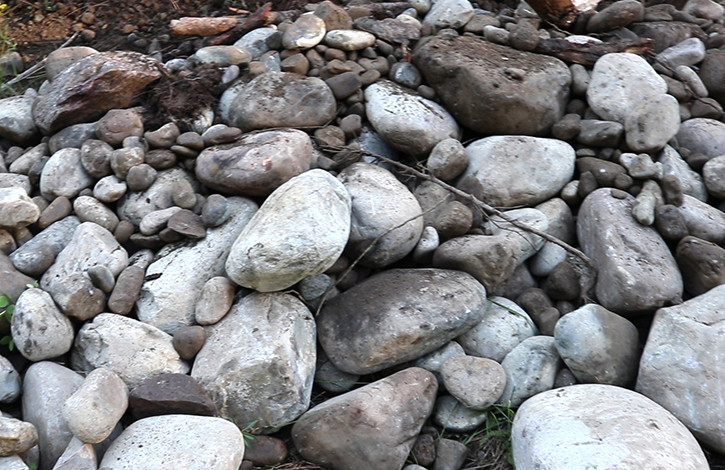 Just some of the rocks that we removed from the soil.
Just some of the rocks that we removed from the soil.
FAQ: How To Filter Dirt From Rocks
1. What is the best method for filtering dirt from rocks?
The best method depends on the scale of your project; manual sifting works well for small jobs, while rock grizzlies or mechanical sifters are more efficient for larger volumes.
2. Can I build my own rock filter?
Yes, you can build your own rock filter using wood or steel, mesh, and basic tools; Rockscapes.net offers DIY guides to help you get started.
3. What materials are suitable for building a rock filter?
Wood and steel are common choices, with steel offering greater durability; mesh or screening is essential for separating soil from rocks.
4. How can I improve the efficiency of my rock filter?
Improve efficiency by adjusting the angle, increasing surface area, using stronger mesh, and pre-screening materials.
5. Are there simple alternatives for sifting small amounts of soil?
Yes, milk crates and DIY screens are simple and effective alternatives for sifting small amounts of soil.
6. Why is filtering dirt from rocks important for landscaping?
Filtering provides usable soil, prevents damage to underground systems, promotes plant health, and supports self-sufficiency.
7. What are the environmental benefits of filtering dirt from rocks?
It reduces waste, conserves resources, and promotes soil health, contributing to sustainable landscaping practices.
8. How can I sustainably dispose of or reuse the rocks?
Use rocks for retaining walls, rock gardens, or decorative elements; avoid disposing of them in ways that harm the environment.
9. What should I consider when choosing a sifting screen?
Consider the opening size, material strength, and corrosion resistance to ensure effective and long-lasting performance.
10. How does Rockscapes.net contribute to landscaping projects?
rockscapes.net offers design inspiration, material selection guidance, expert advice, and promotes sustainable practices for all your landscaping needs.
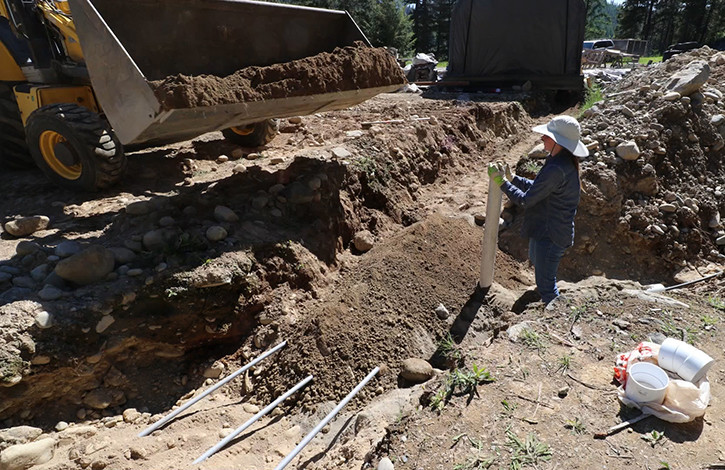 making clean backfill free from rock
making clean backfill free from rock